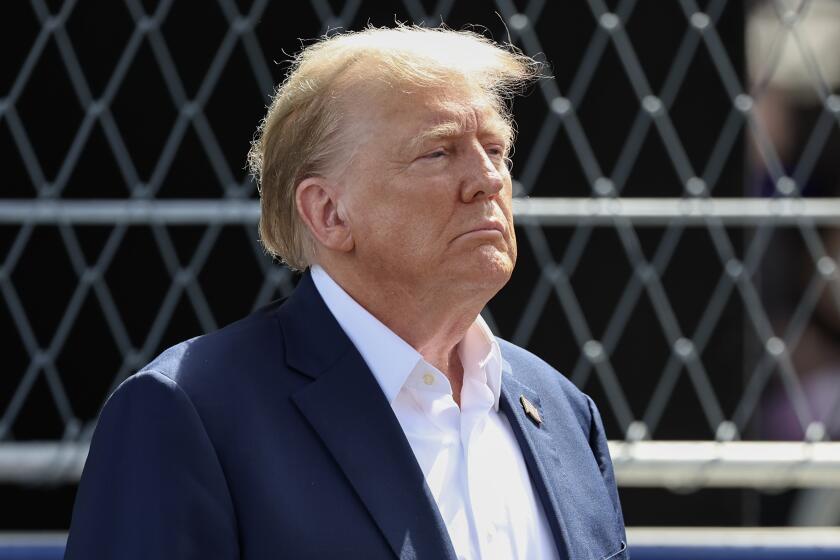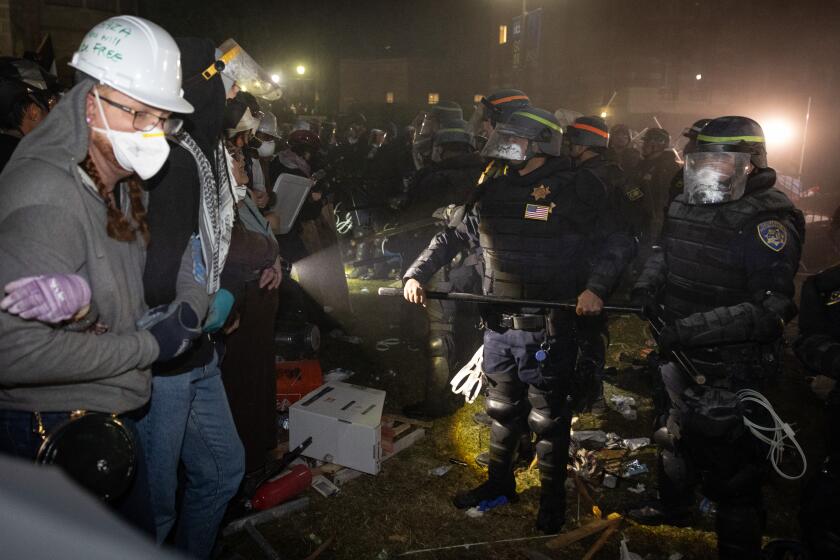Don’t Forget Arms Control
Defense Secretary Richard B. Cheney jumped on Congress last week for rewriting the Pentagon budget and for treating it as a pork barrel.
Cheney then launched into what came across as an arms-race speech that was sharply out of place in an arms-control era in East-West relations. He implied that the House of Representatives has gone soft on communism and warned that the Soviets are beefing up their nuclear forces while the United States treads water. Members of the House, he said, seem to think that Moscow is no longer a threat and act like folks who would “give away their overcoats on the first sunny day in January.”
It is one thing for a defense secretary to go to bat for his budget and his programs, even if Pentagon planners still have not made a case that the most likely military threats over the next decade are those that would need B-2 bombers and “Star Wars” defense systems rather than troops and weapons more useful for limited warfare. It is another to act as if nothing worth note has occurred in East-West relations in the past few years and that a nation that now admits that it cannot feed its own people is planning to add to an empire that is already too big to control.
A recent Time magazine profile described President Bush’s style as a cautious search for consensus, one phase of which can involve advisers with conflicting views fighting it out in his office. His staff calls such debates “engineered train wrecks.” It is time to get up steam for a train wreck on how the defense budget and arms control fit together.
Cheney was not very specific about the Soviet threat, dealing generally with the specter of a “leaner, meaner” Soviet fighting force and specifically with very few programs, one of those American and the other Soviet.
On “Star Wars,” for example, he urged Congress to spend several billions of dollars on a missile-defense system about which the best he could say was that “we have good reason to believe we are talking about something that is not only realistic but that is operationally feasible within the relatively foreseeable future.” That is not exactly the definitive sort of hook on which one hangs hard policy.
The fact is that, despite a handful of successful tests under what amount to laboratory conditions, the technology of “Star Wars” still is out of reach and may be for generations.
The Soviet system he mentioned is the SS-18 intercontinental ballistic missile, the big missile in the Soviet arsenal, capable of carrying 10 or more warheads. Cheney correctly noted that the Soviets still are replacing older SS-18s with improved versions, scarcely a token of peaceable intentions.
What he did not say is that the Soviets have agreed to destroy half their fleet of SS-18s, which would substantially reduce what most arms control specialists have considered the most menacing part of the Soviet nuclear arsenal. The agreement came months ago during START talks in Geneva when negotiators settled on 1,600 as the maximum number of land-based missiles under the treaty. Since then the talks have been limping along, largely because Washington has formulated no long-range view of the weapons it would need to keep the peace after long-range nuclear missiles in both the United States and the Soviet Union have been cut about in half under the START treaty.
Cheney’s view of the Soviet Union as a threat obviously is colored by his belief that Soviet President Mikhail S. Gorbachev is bound to fail in his reform efforts, one that is not widely shared at the White House. But even if Cheney were right, it would be prudent to nail in place as many arms control agreements as possible while Gorbachev is still around to pledge Soviet compliance. It seems time for the President’s staff to engineer another train wreck.
More to Read
Get the L.A. Times Politics newsletter
Deeply reported insights into legislation, politics and policy from Sacramento, Washington and beyond. In your inbox three times per week.
You may occasionally receive promotional content from the Los Angeles Times.






